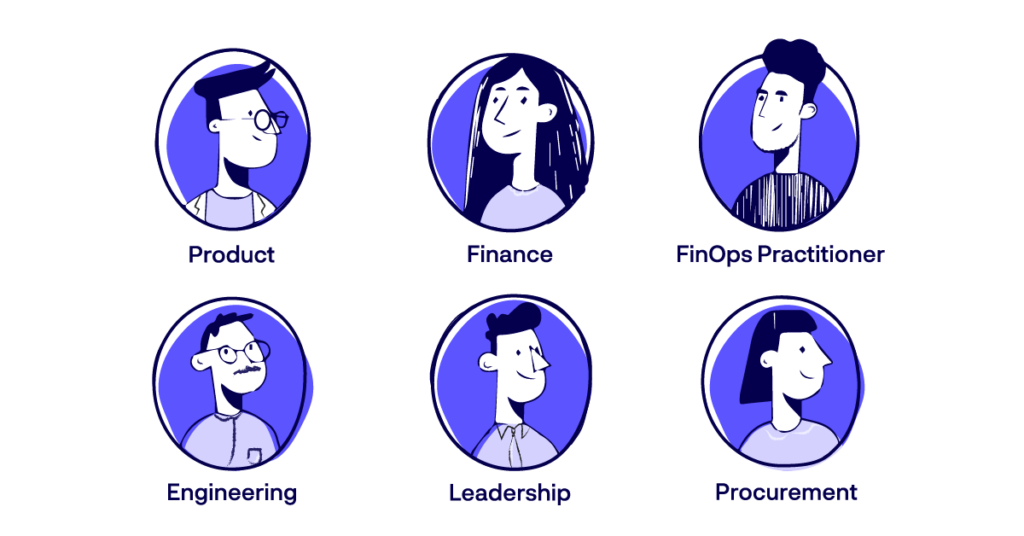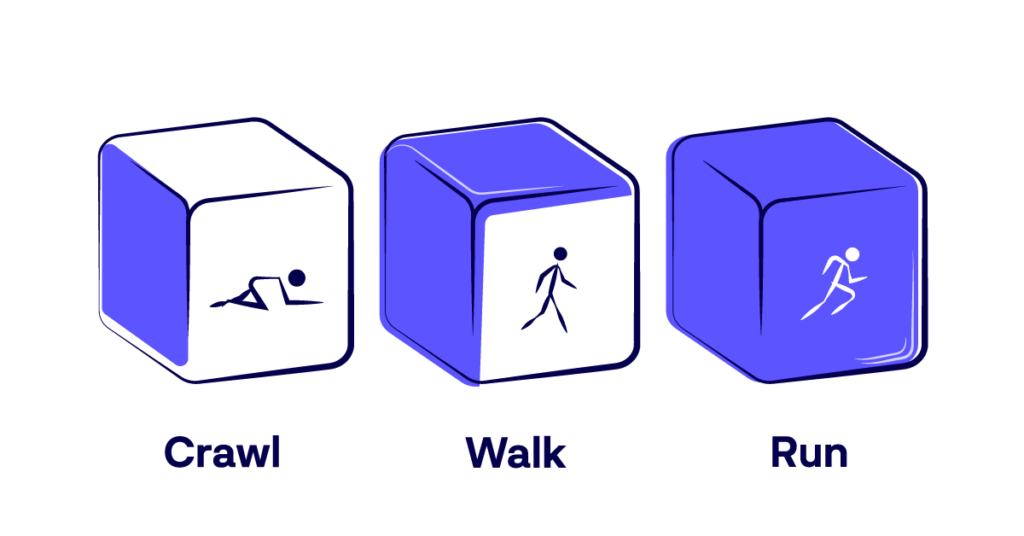Cloud spending has become harder to control. Teams move fast, infrastructure changes frequently, and finance often gets involved only after costs spike. Without shared visibility and clear accountability, costs drift, budgets get strained, and it becomes difficult to connect spending with business outcomes.
The FinOps Framework helps bring order to the chaos. It replaces reactive cost reviews with ongoing collaboration, better forecasting, and more confident decision-making. It also gives organizations a structured approach to manage cloud costs by aligning engineering, finance, and product teams around a common goal — making informed decisions that balance cost, speed, and performance.
As FinOps adoption grows, so does the framework. The 2025 updates reflect how teams are scaling their practices in the real world, with a stronger focus on automation, roles and responsibilities, and actionable data.
In this blog, we walk through the core components of the FinOps Framework and highlight the most important changes introduced in the 2025 update.
What Is the FinOps Framework?
The FinOps Framework is a structured operating model developed by the FinOps Foundation to help organizations manage and optimize their cloud and technology spend. It provides the building blocks for a successful FinOps practice such as principles, personas, success measures, maturity traits, and functional activities. All these are organized in a common language that reflects how high-performing teams drive business value from cloud and related technology investments.
The framework is designed to be flexible and non-prescriptive. Organizations are encouraged to start with the areas of greatest need and grow their FinOps practice in scope, scale, and maturity over time. Whether you’re establishing showback, improving forecasting, or scaling automation, the framework offers a modular structure that adapts to your goals.
Rather than treating cloud cost as a back-office concern, the framework brings financial decisions into the day-to-day workflows of technical and business teams.
Originally developed in response to the challenges of dynamic, usage-based cloud pricing, the FinOps Framework has become a standard reference for enterprises seeking greater visibility, control, and efficiency in their cloud operations. It enables organizations to make informed decisions by aligning financial management with technical execution and business strategy.
As cloud environments have become more complex, the framework has continued to evolve. Importantly, the FinOps Framework is not theoretical. It has been built and continuously refined through contributions from thousands of practitioners and industry experts. These real-world experiences shape the open-source best practices that form the core of the framework.
The 2025 update is the most significant to date, addressing shifts in cloud usage patterns, advancements in automation and AI, and the expanding role of FinOps across procurement, security, and compliance functions. These updates build on the foundation of the framework while expanding its scope to better meet the needs of today’s enterprise environments.
Components of the FinOps Framework
The FinOps Framework as described by FinOps Foundation comprises several core building blocks that work together to provide a holistic approach to effective cloud and technology management.
FinOps principles
These are the foundational values that define how FinOps is practiced and guide behaviour changes. They emphasize collaboration between teams, timely access to accurate data, and making decisions based on business value.
There are six guiding principles that all FinOps frameworks need:
- Teams need to collaborate: When finance, technology, engineering, and product teams work closely together, they can improve the efficiency and long-term value of cloud-based solutions and on-premise technology investments.
- Business value drives technology decisions: All technology spending should be closely linked with the value it brings to the business. This makes it easier for teams to make smarter decisions and conscious trade-offs when balancing performance and cost-efficiency needs.
- Everyone takes ownership for their technology usage: Shared ownership of technology consumption empowers all teams to become more cost-aware and work closely together to create more sustainable cloud environments and optimize their usage.
- FinOps data should be accessible, timely, and accurate: Having regular access to accurate cost and usage data enables all key stakeholders to make smarter business decisions and creates valuable feedback loops that help to fine-tune technology spending and resource allocation.
- FinOps should be enabled centrally: Establishing a centralized FinOps function ensures consistent governance, enables broader adoption of best practices, and creates efficiencies that scale across the organization. It allows teams to benefit from shared tooling, standardized processes, and coordinated decision-making.
- Take advantage of the variable cost model of the cloud: Understanding how cloud pricing adjusts with usage allows organizations to align spend with demand, improve cost efficiency, and scale more flexibly. By proactively leveraging pricing models and discounts, teams can make smarter decisions that support both growth and optimization.
FinOps phases
The FinOps Framework is structured around three iterative phases: Inform, Optimize, and Operate. Together, they help organizations build financial accountability, improve cost efficiency, and mature their cloud cost management practice over time.

- Inform: This phase centers on gaining visibility into cloud and technology spend. It involves collecting and normalizing billing data, cloud cost allocation of shared and variable costs to the right teams or projects, and creating clear, actionable reports. Visibility is the foundation for every decision that follows.
- Optimize: With visibility in place, organizations move into optimization. This phase focuses on identifying and acting on cost-saving opportunities. Typical activities include rightsizing resources, identifying idle or underused services, and leveraging pricing discounts like Reserved Instances, Savings Plans, or Spot Instances.
- Operate: The final phase is about embedding FinOps into day-to-day operations. This includes establishing governance policies, tracking performance through FinOps KPIs, automating manual processes, and promoting a FinOps culture of shared accountability across engineering, finance, and product teams.
These phases are not one-time steps; they run continuously. In a dynamic cloud environment, spend patterns shift, priorities evolve, and new services are introduced regularly.
That means you’re never fully “done” with any phase. You might be optimizing compute today while still working to build visibility for data services. Or you may have strong governance in place but discover new savings opportunities that send you back to optimize again.
FinOps is an ongoing process of refinement, not a checklist. Each phase feeds into the next, creating a cycle of continuous improvement that keeps pace with how your organization actually uses the cloud.
FinOps domains
FinOps domains define the core business outcomes that organizations should aim to achieve through their FinOps practice. They represent the high-level goals of FinOps and serve as the foundation for aligning cloud usage with financial and strategic priorities.
Each domain groups together a set of related capabilities, the specific activities or functions an organization can perform to reach these outcomes. While not every organization needs to implement every capability, all organizations practicing FinOps will engage in activities across each Domain, regardless of their maturity or scope.
- Understand usage and costs: Organizations focus on gaining more insight into cloud resource consumption and other in-scope technologies to evaluate their spending. Achieving this requires extensive data gathering, cloud cost allocation, and development of clear and accurate billing reports.
- Quantify business value: Connects usage and cost data with the value it brings to organizations. This domain prioritizes close budget alignment with forecasting, establishing measurable performance KPIs, and structuring cloud computing environments so they support ongoing business objectives.
- Optimize usage and costs: Focuses on continuous optimization processes that help businesses extract more value from their technology and cloud services. This includes making more balanced choices when provisioning resources, utilizing cost-effective billing rates, and modernizing business architectures to enhance their sustainability.
- Manage the FinOps practice: Covers an organization’s ability to adapt internal cultures to embrace all FinOps principles while continuously improving their processes over time. It covers education, communication, and culture-building around cloud cost accountability.
FinOps scopes
FinOps scopes define the areas of technology spending where FinOps practices are applied. They help organizations understand which parts of their technology footprint fall under FinOps and ensure that cost management practices are aligned across all relevant environments.
The concept surrounding the use of scopes is to help businesses create a more customized approach for managing and controlling various technology costs. They help businesses better understand which people (personas), outcomes (domains), and activities (capabilities) are most relevant for handling those particular expenses.
Scopes provide clarity in three key ways:
- They identify what is being managed: For example, a Scope could be AWS, Azure, GCP, a multi-cloud environment, or even a non-cloud technology like SaaS subscriptions.
- They align teams and data around common cost centers: Enabling clearer accountability, showback, or chargeback.
- They scale FinOps beyond just cloud: Allowing teams to apply the same principles to other areas of technology spending.
Organizations can define multiple scopes depending on how they structure ownership, reporting, and optimization efforts. Scopes are not static, they can evolve over time as technology and team structures change. By clearly defining and managing scopes, teams can ensure that FinOps practices are applied consistently and effectively across the organization.
Currently, the FinOps Foundation includes the following defined scopes: public cloud, software-as-a-service (SaaS), data center, AI, and licensing.
FinOps personas
FinOps personas represent the different key stakeholders that organizations rely on to perform various FinOps activities. When applying FinOps Frameworks, stakeholders fall into one of two working groups: core personas or allied personas.

- Core FinOps personas: These represent teams or individuals directly involved in day-to-day FinOps activities. Stakeholders classified in this grouping are the driving force behind critical business initiatives and are actively involved in key decision-making related to cloud or technology spending. Personas in this category include:
- FinOps practitioner
- Engineering
- Finance
- Product
- Procurement
- Leadership
- Allied personas: These represent different roles within an organization that are not directly engaged in FinOps activities, but still require a certain level of coordination with core personas. Personas in this category include:
- IT asset management (ITAM)
- IT financial management (ITFM)
- Sustainability
- IT service management (ITSM)
- Security
FinOps maturity model
The FinOps maturity model is a structured methodology that helps organizations assess how developed their FinOps practice is and where they can grow next. It provides a defined way to evaluate progress across different capabilities, from early visibility and cost allocation to fully automated optimization and governance.

The model has three levels of maturity:
- Crawl: Teams are just getting started. Visibility is limited, processes are manual, and financial accountability is still developing.
- Walk: Basic cost controls are in place. Teams begin collaborating across functions, building consistency in reporting, and taking action on optimization opportunities.
- Run: FinOps is embedded into daily operations. Automation, forecasting, and governance are mature. Teams make real-time, cost-aware decisions with shared accountability.
By creating this continuous cycle of operational growth and improvement, businesses can make incremental improvements to their FinOps practices and drive more departmental accountability and consistency as they scale.
It’s important to understand that FinOps maturity is not uniform across all activities. You might be in the Run phase for commitment management, Walk for forecasting, and still in Crawl for shared cost allocation. This variation is normal and expected.
There are no permanent runners in FinOps. As your cloud footprint evolves, new services, teams, and priorities constantly emerge. Each capability progresses at its own pace based on business needs, tooling, and stakeholder alignment.
To learn more about this mindset and why maturity is never static, check out our blog: There Are No Permanent Runners in FinOps.
FinOps capabilities
FinOps capabilities refer to the specific actions or skill sets that organizations require to manage their cloud and technology costs effectively. These are the functional elements of a FinOps Framework that support various domain types and help to achieve the desired outcomes.
Each FinOps capability has its own fundamental principles and often includes more detailed sub-capabilities. These provide a structured way for businesses to implement specific FinOps practices within their teams. They also come with their own measurements of success that businesses can track, as well as detailed instructions on how to include them in maturity assessment models.
See the full list of FinOps capabilities.
FinOps Framework 2025 Updates
In March of 2025, the FinOps Foundation introduced new updates to the FinOps framework that are important to be aware of, including:
Updated definition to include technology
The FinOps Framework underwent a key update in 2025, with a revised definition that focuses on both “cloud and technology” spend.
While this may seem like a minor change, it actually enabled a restructuring of the framework, focusing on what’s now called the “Cloud+” era. This is where cost accountability extends beyond public cloud spend to adjacent disciplines like IT financial management (ITFM), IT asset management (ITAM), IT service management (ITSM), software asset management (SAM), sustainability, and IT security.
The introduction of Cloud+ recognized that many organizations now need to balance their public cloud costs with other related technology expenses. This includes data centers, private clouds with on-premise infrastructure, and SaaS-related spend.
With more businesses needing a holistic view of all their technology spending, the newly formatted FinOps Framework now supports this broader perspective.
Reworded principles
The recent update to the FinOps Framework has introduced reworded principles that better represent the evolution of FinOps best practices.
Four of the six original principles received updates that reflected the blended approach of cloud and technology spend management and optimization.
Here’s what changed:
- “Decisions are driven by the business value of the cloud” is now “Business value drives technology decisions.”
- “Everyone takes ownership for their cloud usage” is now “Everyone takes ownership for their technology usage.”
- “FinOps data should be accessible and timely” is now “FinOps data should be accessible, timely, and accurate.”
- “A centralized team drives FinOps” is now “FinOps should be enabled centrally.”
Revised domains
Two of the four listed working domains were also reworded to align with the FinOps Framework’s Cloud+ inclusion. Both changes removed the word “cloud” from their domain names to reflect that FinOps efforts should now represent optimization strategies for a broader range of technology spending.
Here’s what changed:
- “Understand cloud usage and cost” is now “understand usage and cost”
- “Optimize cloud usage and cost” is now “optimize usage and cost”
Renamed FinOps capability
The original FinOps capability, centered around cloud policy governance, received a new title as part of the 2025 update. Similar to the changes made to certain principles and domains, this new naming convention reflects the new, broader scope of the modern FinOps Framework.
Here’s what changed:
- “Cloud Policy Governance” is now “Policy & Governance”
Additional scopes
A significant modification to the FinOps Framework was the introduction of scopes. With many organizations today now managing much more complex infrastructures, technology spending has expanded past traditional public cloud environments. This includes areas like SaaS subscription costs, data centers, private clouds, and Generative AI technologies.
Adding scopes to the FinOps Framework provides a structured way for organizations to apply various FinOps principles to specific operational situations. They’re useful for defining relevant personas and prioritizing specific capabilities while outlining clear KPIs for improvement.
Improve Your FinOps Efforts With ProsperOps

As cloud environments scale, ensuring cost efficiency without compromising performance becomes increasingly challenging. ProsperOps helps businesses automate cloud cost optimization, eliminate waste, and maximize savings — ensuring that every cloud dollar is spent effectively.
ProsperOps delivers cloud savings-as-a-service, automatically blending discount instruments to maximize your savings while lowering Commitment Lock-in Risk. Using our Autonomous Discount Management platform, we optimize the hyperscaler’s native discount instruments to reduce your cloud spend and place you in the 98th percentile of FinOps teams.
This hands-free approach to cloud cost optimization can save your team valuable time while ensuring automation continually optimizes your AWS, Azure, and Google cloud discounts for maximum Effective Savings Rate.
In addition to autonomous rate optimization, ProsperOps now supports usage optimization through its resource scheduling feature, ProsperOps Scheduler. Our customers using Autonomous Discount Management™ (ADM) can automate resource state changes on weekly schedules to reduce waste and lower cloud spend.
Make the most of your cloud spend with ProsperOps. Schedule your free demo today!





